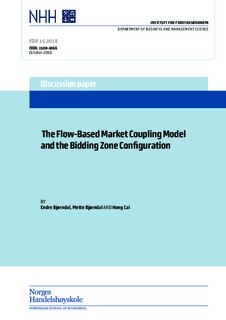| dc.description.abstract | In May 2015, the Flow-Based Market Coupling (FBMC) model replaced the Available Transfer Capacity (ATC) model in Central Western Europe to determine the power transfer among bidding zones in the day-ahead market. It might be easier to change the bidding zone configuration in the FBMC model than in the ATC model as the FBMC model does not need to determine the maximum trading volume between two bidding zones. In our study, we run a simulation in the IEEE RTS 24-bus test system and examine how the bidding zone configurations affect the performance of both the FBMC and ATC models. We show that by improving the zone configuration, the FBMC model outperform the ATC in terms of reducing the re-dispatching cost only when the systems operators have a higher level of cooperation in the real-time market. Our results also indicate that better cooperation among the system operators would help to reduce the need for load shedding. | nb_NO |
